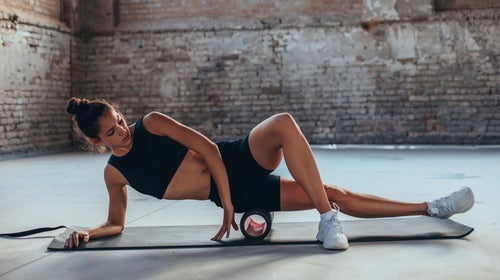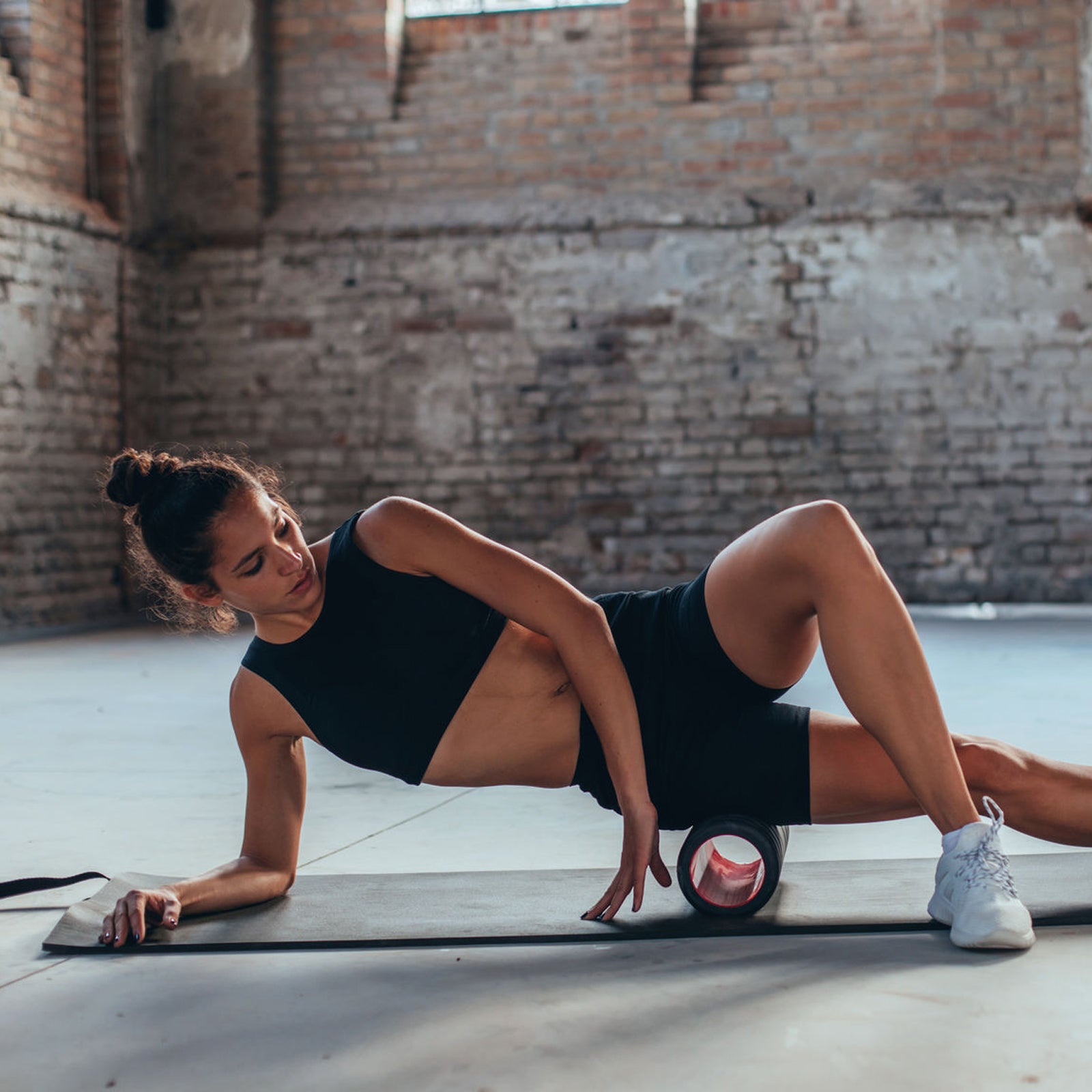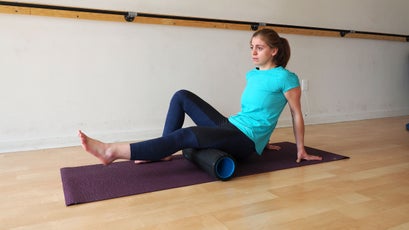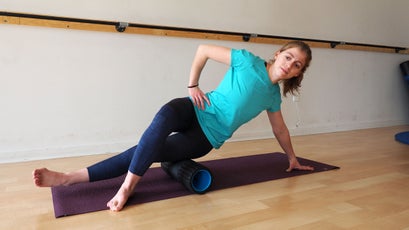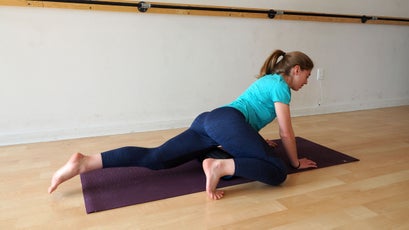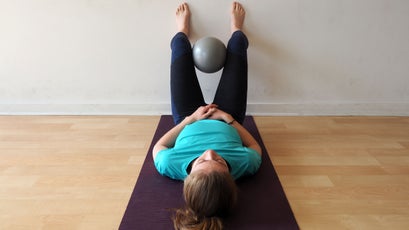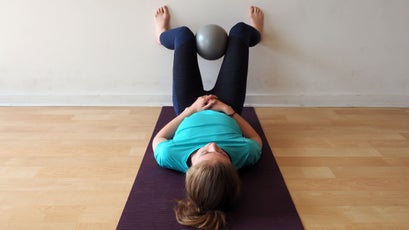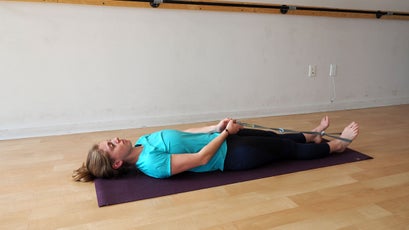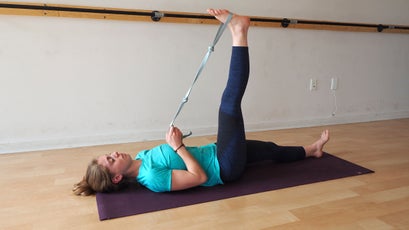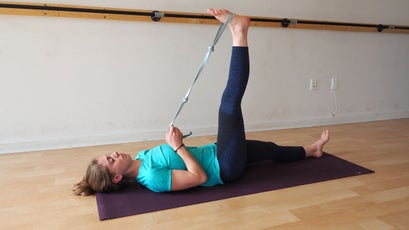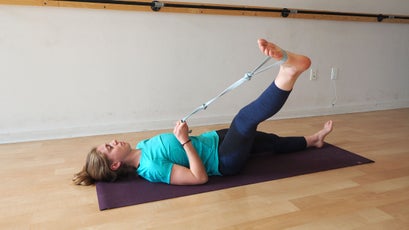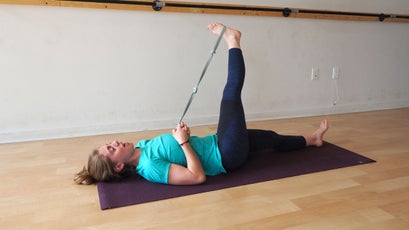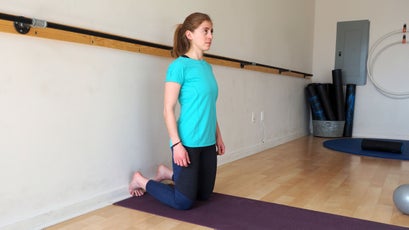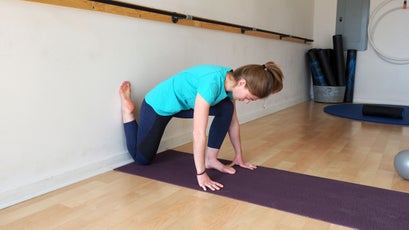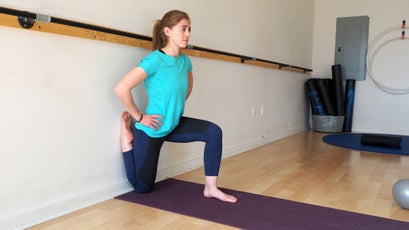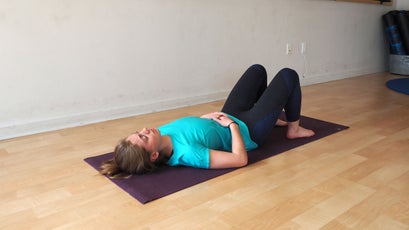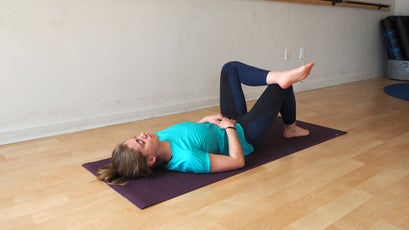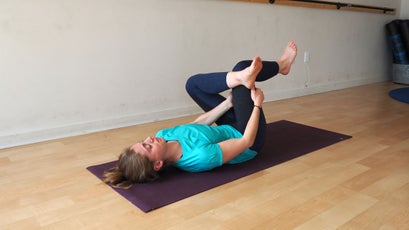The hips are the human body’s main engine and center of mass. The largest and most powerful muscle groups—the glutes, quads, and hamstrings—all connect at the hips, and they allow you to run, jump, climb, and swim. The joint is crucial to all movement, in sports and day-to-day life, which is why persistent hip pain can be so debilitating.
Wear and tear on the joint causes hip health to worsen with age. According to the Centers for Disease Control and Prevention, 7 percent of adults in the U.S.��suffer from hip pain, the third most common joint pain��behind shoulder pain, at 9 percent, and knee pain, at 18 percent.��There’s also a growing prevalence of , , due to repetitive overuse and acute trauma.
8 Neck and Shoulder Stretches to Relieve Pain
 Work and play both stress the neck and shoulders. Here's how to recover.
Work and play both stress the neck and shoulders. Here's how to recover.We reached out to Doug Kechijian, a doctor of physical therapy��and the CEO��and��cofounder of in New York City,��and Kelly Starrett, a physical therapist, the founder of , and author of the bestselling . They��walked us through the mechanisms of hip pain and how to bounce back, starting with the��first part of the recovery process: developing mobility.
What Causes Hip Pain?
The hip is the body’s biggest ball-and-socket joint. The femoral head sits in the acetabulum of the pelvis, with a layer of cartilage in between that offers cushioning and keeps the joint sliding smoothly. Unlike a hinge joint,��such as��the knee, the hip allows for a huge range of motion in three planes—flexion and extension,��abduction and adduction,��and internal and external rotation. As far as joints go, the hip is relatively tough and stable, but with athletes, it sees a ton of use. This repeated stress over time can lead to structural changes within the joint (called hip impingement), pain, and a restricted range of motion.
“Bones are like any other tissue in the body—they adapt to stress,” says Kechijian. When you first start rock climbing, for example, the skin on your fingers grows��calluses to adapt to the demands. The hips are no different. “They lay down additional bone in an effort to adapt to stress and protect themselves,” he says.
Excess bone can layer around the head or the neck of the femur (cam impingement), the acetabulum��(pincer impingement), or both. The excess bone reduces mobility—typically flexion and internal rotation—and causes more wear and tear within the joint, which in turn spurs additional bone growth. Long-term��impingement��increases your chances of .
Restricted hip mobility is not only correlated with hip pain��but also with pain in the knees and the lower back, according to published in the International Journal of Sports Physical Therapy. “The body is always going to find a way around the problem. If you don’t have good mobility in your hips, and your sport requires it, your body is going to get that mobility from somewhere else,” Kechijian says.��
The Best Hip Pain Treatment? Train Your Way Out
Aside from acute injuries, such as a labral tear or fracture, chronic hip pain from overuse is treatable on your own. Even though hip pathology exists on a spectrum and differs between individuals, and is often different between men and women��(due to anatomical differences in the hips), “the fix is the same, in my opinion,” Kechijian says. “All you can do is control the controllables,” he adds, which means restoring��the range of motion in the joint, then developing strength and stability through that full range of motion.
“Our goal is to restore hip function, not just to put the flames out,” says Starrett. “But when we improve hip function, that usually improves the pain symptoms as well, so it’s the same conversation.”
Try these mobility exercises three to five times per week, for three to six weeks. If your pain doesn’t improve or continues to get worse, consult a professional, because��you could have a more serious structural issue in the hip. Even if your pain symptoms disappear, it’s good to continue with these mobility exercises for maintenance and injury prevention. Range of motion follows a “use it or lose it” philosophy—if you’re not consistently reaching those boundaries, your range will begin to shrink.
If you keep your hips happy, you can reduce hip pain, improve your��efficiency��and athletic performance, and prevent further injury.
Tools You’ll Need:
- Foam roller or massage ball
- Stretching strap (or a short length of rope or webbing)
- Mini exercise ball��
Hip Pain Exercises for Mobility
Foam Roll or Massage Ball
What it does: Reduces tension in the muscles and connective tissue surrounding the hip.
How to do it: Start by sitting upright on the foam roller with your knees bent and your feet flat on the ground. Place your hands on the ground behind you for support, and shift to the edge of the foam roller so that only one cheek remains on the roller while the other hangs off the side. Extend the leg that’s on the roller, and using your hands and the free leg to control the pressure, gently roll up and down the backside of your leg��from your butt to your knee��to target the glutes and the hamstrings. Then gradually rotate your body toward the center of the foam roller and systematically work your way around the leg to hit the side of the glutes, the IT band, the quads, and the hip flexors. From this downward-facing position, shift your weight onto your other leg, and continue rolling that one in the reverse order as the first as you work back to a sitting position.
To target problem areas more precisely, you can also use a massage ball or lacrosse ball. For this, place the ball on the ground, and using your hands and feet for support, gently roll the meaty areas of your legs, glutes, or hips over the ball until you find a knot. Inhale deeply, and then exhale as you gradually increase pressure on the ball. Contract and relax the muscle a handful of times, then make small circular movements over the ball to loosen the tight tissues.
“Moderate compression should not stimulate pain in healthy soft tissues,” Starrett says. If you gently weight a foam roller or a massage ball and it does feel painful, the tissues at that location are likely overly tight, and you need to ease off on the pressure. As a general rule, you should be able to inhale and exhale slowly and deeply while rolling out. If it’s so painful that you have to tense up and hold your breath, you’re applying too much force��and possibly doing more damage than good.
Supine Hip Shifting with Internal Rotation
What it does: “This drill teaches you to simultaneously posterior tilt the pelvis while actively shifting the head of the femur to the back of the socket, both of which should decrease the sensitivity and the pinching that come with impingement,” Kechijian says.
How to do it: Lie on your back with your knees bent at 90 degrees and your feet flat against a wall.��Walk your feet out to each side as far as you can comfortably go (internal hip rotation), but keep your thighs parallel and roughly six inches apart (squeezing a small exercise ball between your thighs helps). Tilt your pelvis back by lifting your tailbone slightly, while keeping your lower back flat on the ground. Hold this position, and gently tip your pelvis from side to side (a subtle movement).
“The knees should move up and down here, not forward and backward, while the lower back remains as stationary as possible on the ground,” Kechijian says. “The idea is to learn to dissociate the hips from the back.”
Perform one to two sets of 30 to 40 shifts per side.
Hamstring/Calf Stretch with Strap
What it does: Stretches the hamstring and the calf muscles to improve flexion of the hip joint.
How to do it: Loop a stretching strap��around the ball of your foot, then lie flat on your back with your legs together and straight. Gently pull on the strap with your hands to raise your leg (keeping it straight) and induce a stretch to the calf and the hamstring—but don’t pull so far that your pelvis tilts or your hip hikes. The purpose is to keep your pelvis level, square, and stable throughout the stretch. Hold for one to two minutes while slowly easing deeper into the stretch with each exhale. Repeat on the other leg.
Single-Leg Adductor and Abductor Stretches with Strap
What they��do: Stretch��the hip’s adductor (groin and inner thigh) and abductor (gluteus medius, gluteus minimus, and tensor fasciae latae) muscles, as well as the IT band,��to improve mobility of the hip joint.
How to do them: Continuing from the previous stretch, with your leg still raised, use the strap to gently lower your leg out to the side, perpendicular to your body, until you feel a stretch in the inner thigh and groin area (the hip-adductor muscles). Lower your leg as far as you can comfortably go��without moving your pelvis. Like before, the idea is to keep your pelvis level, square, and stable throughout the stretch. Hold tension for a minute, then move the leg across your body in the opposite direction to target the hip-abductor muscles and IT band. Hold this stretch for a minute as well, then repeat with the other leg.
Single-leg circles: Progress the single-leg stretch by slowly moving your leg in larger and larger circles (using the strap to control the movement) to explore the end range of your hip mobility. Keep your leg straight, and trace five to ten��circles in a clockwise direction,��then repeat in the other direction. Be wary of any clicking or hard stops, as that might be a sign of hip impingement. Focus on keeping your pelvis level, square, and stable throughout the stretch.
Couch Stretch
What it does: Stretches the hip flexors to improve extension of the hip joint.
How to do it: Kneel on the ground, facing away from a wall. Place one knee in the corner where the floor and wall meet, with your shin running up toward��the ceiling and parallel to the wall. Move your other foot out in front of you so that it’s��flat on the floor, with your knee bent at 90 degrees. Raise your torso, and gently lunge forward to sink deeper into the stretch. Hold the stretch for one to two minutes per side.
“The idea here is to keep the knee close to the wall��and get your torso as upright as possible without arching through the lower back,” Kechijian says.
If this position is too difficult, try to perform the same stretch with your foot on a bench, a chair, or a couch (something roughly knee height)��instead of up against a wall. This variation is easier for��those who have really tight quads and hip flexors.
Supine Figure-Four��Stretch
What it does: Stretches the external hip-rotator muscles (piriformis, superior and inferior gemellus, internal obturator, and quadratus femoris).
How to do it: Lie on your back with your knees bent. Lift your left leg and cross it over the right so that your left ankle rests just below your right knee. Raise your right leg, grab your right thigh, and gently pull it toward��your chest. Hold this stretch for one to two minutes, then repeat on the other side.
More Tips
- If your hips are stiff, take extra care to warm up slowly before exercise.
- Always roll out or stretch after exercise to reduce the stiffness and inflammation caused from the exercise.
- Limit the amount of time you spend sitting in a chair. If you’re a desk jockey, set up a standing desk, sit on an exercise ball, or get up and move as often as you can.
- According to Starrett, we need to spend more time living at the edges of our range of motion. Answer e-mail��on the floor, take a break to do some lunges, and hang out in a squat for a few minutes every day. “We’re meant to be moving throughout the day,” he says.
